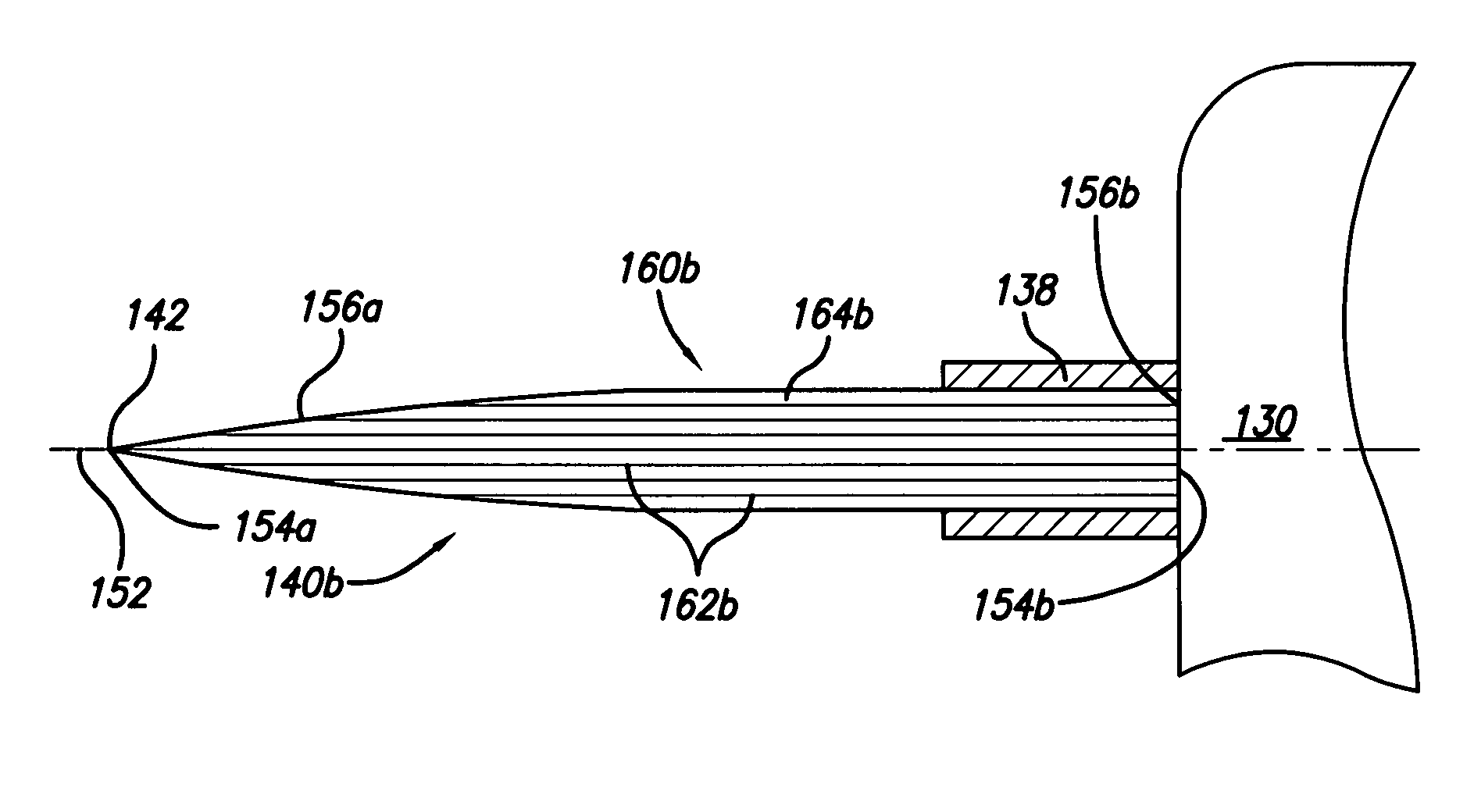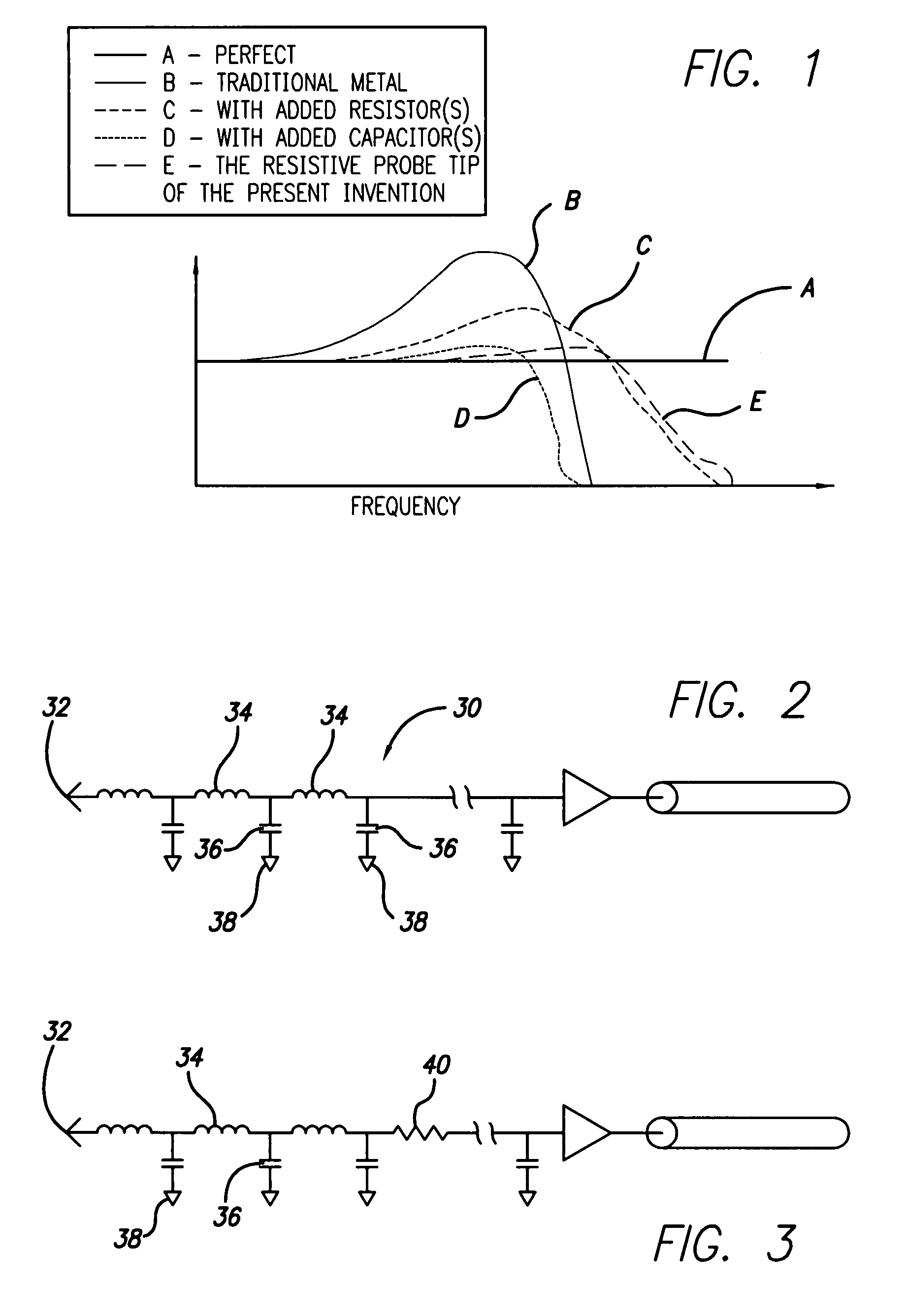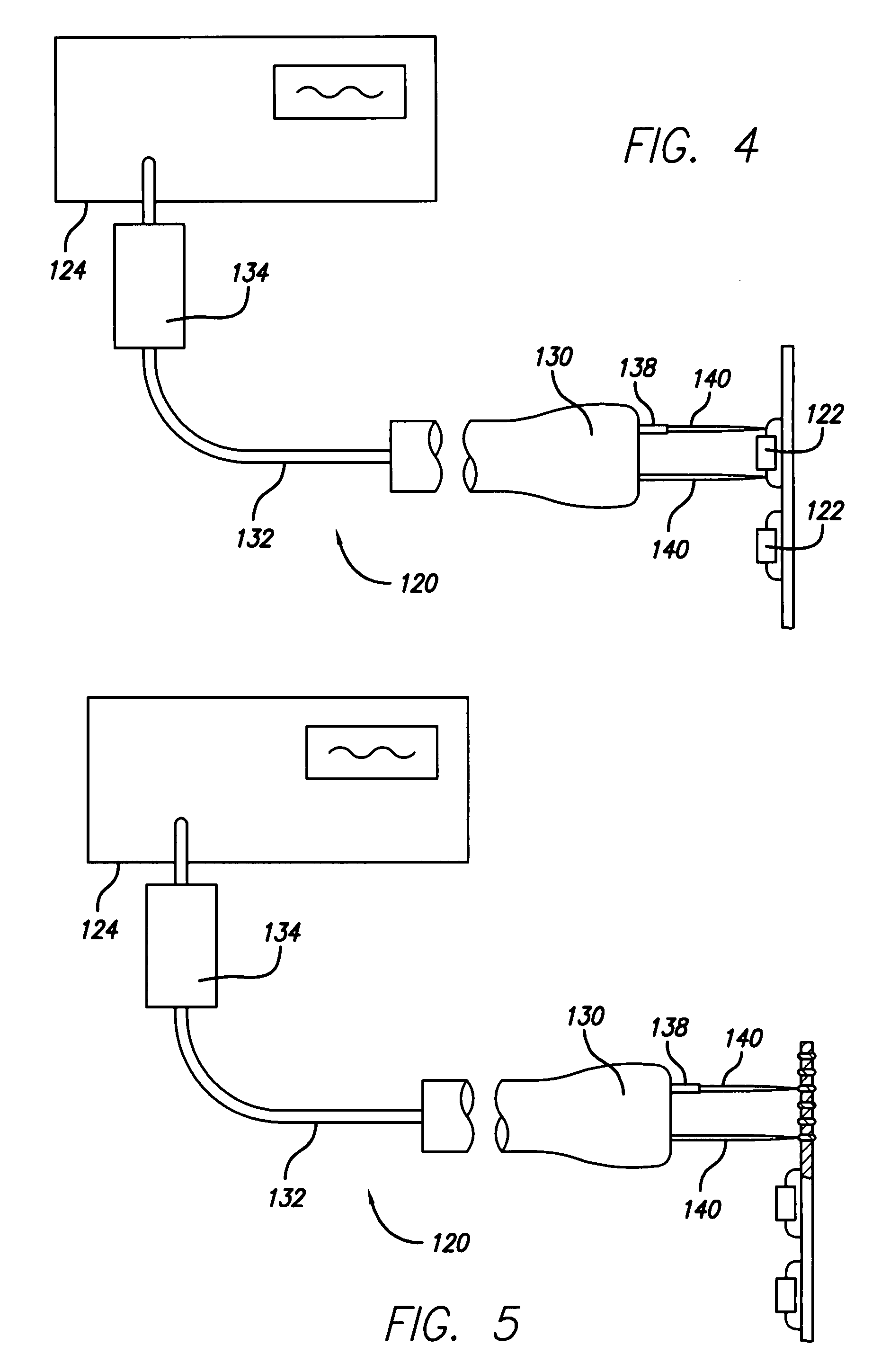Resistive test probe tips and applications therefor
a test probe and resistive technology, applied in the field of resistive test probe tips, can solve the problems of reducing the bandwidth performance of the test probe tip, adding unwanted length, etc., and achieve the effect of flat frequency response and bandwidth loss
- Summary
- Abstract
- Description
- Claims
- Application Information
AI Technical Summary
Benefits of technology
Problems solved by technology
Method used
Image
Examples
Embodiment Construction
[0058]The present invention is a resistive test probe tip in which the entire test probe tip (or substantially the entire probe tip) is a resistor. In one preferred embodiment, the test probe tip is made from resistive material. As can be seen in FIG. 1, the present invention has a frequency response such as trace E that is a significant improvement over the frequency response (trace B) of a traditional metal test probe tip (FIG. 2) and over frequency responses (trace D) of test probe tips with at least one added capacitor. The frequency response (trace E) of the present invention is similar (and preferably slightly improved) to frequency responses (trace C) of test probe tips with at least one added resistor (FIG. 3). Because the entire extension is resistive, the resistive test probe tip of the present invention may be a long probe tip without the problems associated with length and the increased inductance usually associated with length. In addition, because of the strength of th...
PUM
 Login to View More
Login to View More Abstract
Description
Claims
Application Information
 Login to View More
Login to View More - R&D
- Intellectual Property
- Life Sciences
- Materials
- Tech Scout
- Unparalleled Data Quality
- Higher Quality Content
- 60% Fewer Hallucinations
Browse by: Latest US Patents, China's latest patents, Technical Efficacy Thesaurus, Application Domain, Technology Topic, Popular Technical Reports.
© 2025 PatSnap. All rights reserved.Legal|Privacy policy|Modern Slavery Act Transparency Statement|Sitemap|About US| Contact US: help@patsnap.com



